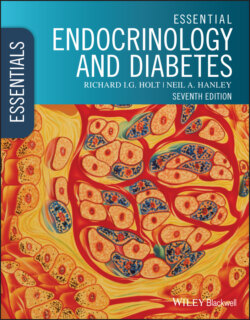Читать книгу Essential Endocrinology and Diabetes - Richard I. G. Holt - Страница 51
Hormone transport
ОглавлениеMost peptide hormones are hydrophilic and can circulate free in the bloodstream with little or no association with serum proteins. In contrast, steroid hormones and thyroid hormones are hydrophobic and circulate largely bound to proteins. There are relatively specific transport proteins for many of the steroid hormones, e.g. cortisol‐binding globulin (CBG) and sex hormone‐binding globulin (SHBG), as well as for thyroid hormones [thyroxine‐binding globulin (TBG)]. These hormones also associate more loosely with other circulating proteins, especially albumin. The amounts of protein‐bound and unbound (‘free’) hormone are in equilibrium in the circulation. Only the free hormone can diffuse readily into tissues and act on target cells. Many clinical assays still measure total hormone in blood and are consequently affected markedly by changes in the concentration of the binding protein. This can be misleading because shifts in the equilibrium mean that free hormone concentrations are relatively constant and biological activity remains the same. For instance, women on the combined oral contraceptive pill have raised serum CBG and increased total cortisol. However, free cortisol levels and cortisol action is unaltered.
